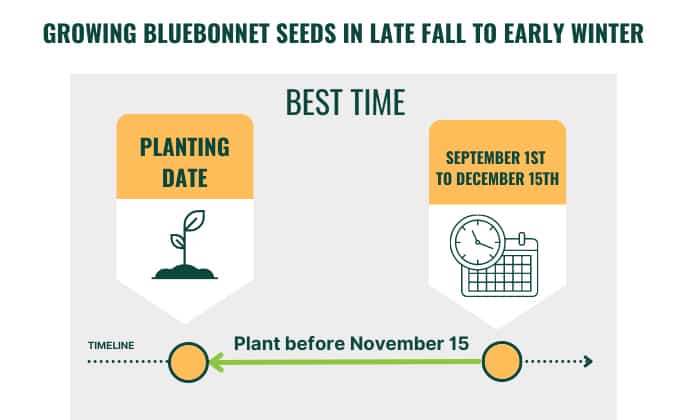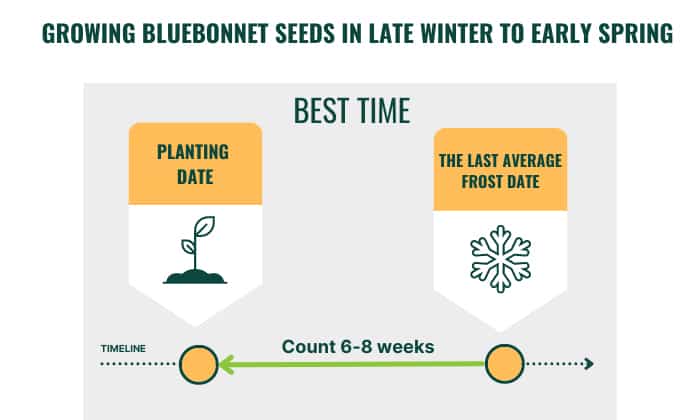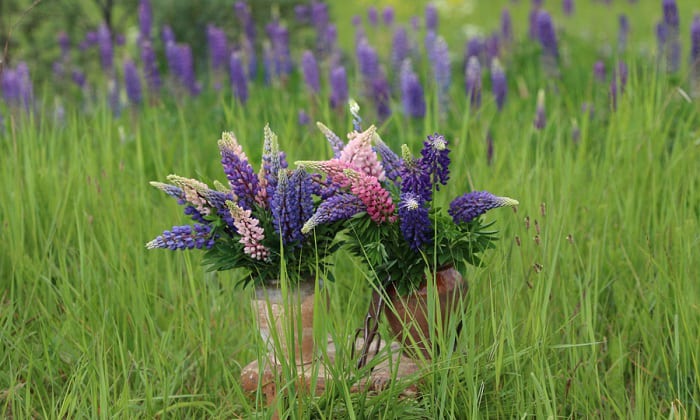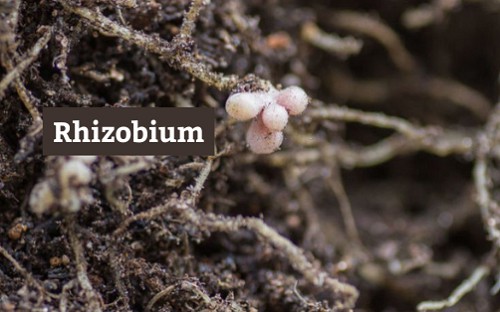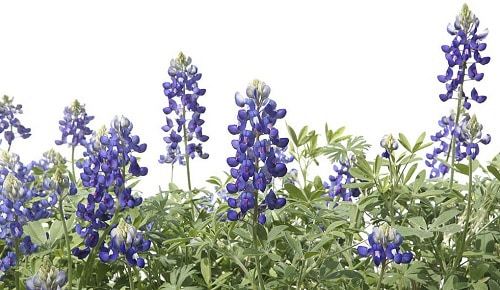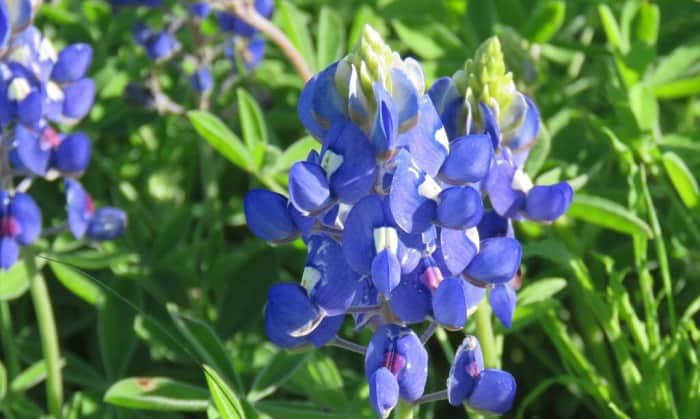Bluebonnets are native spring wildflowers spread across Texas. They are difficult to establish, which is why knowing when to plant bluebonnet seeds is essential before growing them in your lawn!
Grow bluebonnets in the fall to early winter seasons, from September 1 to December 15. If you want to experience a spring blooming season in March, planting them before November 15 is highly recommended.
This article discusses everything you need to know about growing, taking care of, and maintaining these beautiful plants, so read further for more!
Table of Contents
Best Time to Plant Bluebonnet Seeds
1. Planting in late fall to early winter
In Texas, where bluebonnet flowers are endemic, they should be planted in the fall to early winter. This is particularly from September 1st to December 15th, but it is recommended to plant before November 15 if you want them to bloom in spring.
Bluebonnets are hardy to minimum temperatures of 10°F to 20°F, which makes USDA Hardiness Zone 8 the most ideal area they can be planted in.
2. Planting in late winter to early spring
It is also possible to plant these wildflowers in Growing Zones 4 to 7 by growing seedlings indoors then transplanting outdoors when temperatures are warm enough.
A good rule of thumb to remember is to sow seeds indoors 6 to 8 weeks before the last average frost date in your area or sow outdoors if the soil is frost-free and becomes workable.
You can refer to the table below as a guide on planting bluebonnet seeds depending on location outside of Texas:
| Zone | Last Spring Frost Date | Start Seeds Indoors | Transplant Seedlings or Start Seeds Outdoors |
| 4 | April 24 to May 12 | February 27 to March 17 | May 8 to 26 |
| 5 | April 7 to 30 | February 11 to March 2 | April 21 to May 14 |
| 6 | April 1 to 21 | February 5 to 24 | April 15 to May 5 |
| 7 | March 22 to April 3 | January 26 to February 7 | April 5 to 17 |
Keep in mind that these are estimates only. Some seasons may last longer or shorter than the others, which pushes forward or pulls back frost dates.
Planting Bluebonnets in a Field
1. If planting in a lawn with existing turfgrass, mow the grass as low as you can, reduce any thatch build-up, and remove remaining vegetation (such as weeds) so that there will be sufficient seed to soil contact.
2. When planting on undisturbed soil, there is no need to prepare the seedbed. However, if you wish to do so, you can lightly till the soil surface to a one-inch depth and smoothen it by using a rake.
3. Broadcast the seeds 8 to 10 inches apart through the following methods:
- Scatter them by hand or with the help of a mechanical spreader for smaller planting areas at a rate of 8 to 10 seeds per square foot.
- For larger fields, broadcast using a seed drill or mechanical power tools at a rate of 20 to 30 pounds of bluebonnet seeds per acre.
4. How deep seeds are into the soil are important. Pat or roll over the field so that the seeds are firmly pressed a quarter-inch deep into the soil. Cover with more soil if necessary.
5. Lastly, water the seeds thoroughly. After planting, lightly water every 3 days in the succeeding 3 weeks if your location lacks rainfall.
Growing Bluebonnets in Pots
- Select your container. A 3 to 5 gallon pot with drainage holes is large enough to grow bluebonnets in without losing any of its aesthetic appeal.
- Pour in neutral or slightly alkaline garden soil with a small amount of sand and compost added. Make sure it is slightly moist and free of any weeds before inserting the seeds.
- Sow the seeds 6 to 8 weeks before the last average spring frost date in your location. Plant 3 seeds a quarter inch deep into the soil per container. Thinly cover them with soil.
- Monitor the seeds and keep them moistened during the winter season so they can germinate properly.
- If temperatures are warm enough outside, you can transplant the bluebonnets outdoors. If you’ve transplanted them too early or if temperatures are below 35°F, you can cover them for the meantime using cover fabric.
Factors Affecting Bluebonnet Seed Planting
1. Presence of rhizobium in soil
Rhizobium is a nitrogen-fixing bacteria that helps acquire nitrogen in the air then convert it to ammonia, which aids in plant growth. Lack of bluebonnet blooms is usually associated with the lack of these bacteria.
One way to know if your soil has them is to see if the roots look like they have small, round-shaped lumps called nodules. If so, there is rhizobia present. If not, you can purchase rhizobium powder and apply some to bluebonnet seeds prior to planting.
2. Scarifying bluebonnet seeds
Generally, scarifying seeds or breaking the outer coating of the seed is not necessary. But if you want to encourage a faster rate of germination, you can do so by employing the following methods:
- Use a knife or a nail file or clipper to nick the seeds.
- Rub the seeds through sandpaper until you penetrate the seed coat.
- Place the seeds inside a freezer overnight. Run them through boiling water the next day then soak in room temperature water for several hours.
Remember that the cut you make on the seed coat should be as shallow as possible or else you will be damaging the seed’s inner structures.
Tips on Caring and Maintenance of Bluebonnets
1. Location
Plant your bluebonnet seeds at a sunny spot in a field or place in a window where it can receive direct sunlight. Although bluebonnets can grow in partly shaded areas, they should still receive 8 to 10 hours of full sun everyday.
2. Soil
Bluebonnets prefer moderately fertile, alkaline, and well-draining soils to grow. They require cool temperatures to grow out their roots and warm temperatures of 55°F to 70°F to germinate.
3. Water
A good rule of thumb is to water the plant if the top layer of the soil is dry. Although bluebonnets are tolerant to drought, they thrive best when supplied with sufficient water.
4. Fertilizer
Generally, fertilizer is not necessary since it will increase leaf production but will not improve bloom yields. However, if your plants have a weak appearance, you can apply an all-purpose fertilizer.
5. Harvest
Seed pods are located in the flowers which will begin turning yellow 1 to 2 weeks after the flower petals drop. When you see this, pull away the seed pods and wait for them to turn brown then burst by themselves.
This way, you can acquire free bluebonnet seeds which you can plant again, give away to relatives and friends, or sell in the market!
Frequently Asked Questions
Do you need to soak bluebonnet seeds before planting?
No, it is not recommended because it might damage the coating of the seeds. However, you may freeze the seeds overnight then wash them with boiling water if you want to speed up germination.
How long do bluebonnet seeds last?
As long as you keep the seeds in a dry and cool place at room temperature and away from sun exposure, they will last for about 2 to 3 years.
Are bluebonnets annuals or perennials?
Bluebonnet flowers are considered annuals, which means their growth stages (germination, growth, blooming, and seed development) completed within a year. After finishing their life cycle, they will die off.
Is it too late to plant bluebonnet seeds?
Although there is no consensus on when it is too late to plant bluebonnets, it is safe to plant them from fall to early spring depending on your location. Summer is not a good time since the seeds may not acquire the cool temperatures they need to develop roots.
Conclusion
Knowing when to plant bluebonnet seeds is important so that you can grow these beautiful wildflowers. Remember that timing and cool temperatures are essential aspects to consider when planting.
If you’re from Texas, you can directly sow bluebonnets in a field, yard, or lawn. If you’re from outside the state, you have to sow them indoors in pots or other containers before transplanting bluebonnets outdoors.
Well, you’re definitely well-equipped and ready to grow your own wildflower patch!
Standard planting schedule for other flowers, please take a look!

Hi, I am William – Floridayards’ digital content creator. My job is to find answers to all your concerns with thorough research and our team’s expert advice. I will also bring you honest reviews on the best products and equipment for raising your beautiful garden. Please look forward to our work!



